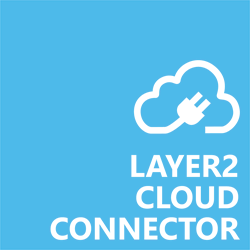MICROSOFT DYNAMICS 365 CRM - SQL Server DATA INTEGRATION
Big and modern companies rely on Microsoft Dynamics 365 for a holistic view of their customer data. Microsoft Dynamics CRM links all customer and business processes and supports modern customer management with powerful functions. Thus, the Microsoft platform supports modern and digital customer communication with optimized processes and contributes to the productivity and collaboration of the company's employees. Integrate and sync your Microsoft Dynamics CRM data with SQL Server. Without any coding - just using the Layer2 Cloud Connector. In the example below you can see how it works.
CONNECT YOUR Microsoft Dynamics 365 (CRM) STEP-BY-STEP
This "how-to-connect" documentation will explain the initial configuration of an example connection from Microsoft Dynamics CRM to SQL Server. We will be synchronizing data stored in Microsoft Dynamics CRM and SQL Server.
This guide presupposes that you have installed the Layer2 Cloud Connector and that you are familiar with its basic functionality. The Layer2 Cloud Connector User Documentation will provide you with all the necessary information.
Contents
2. Configuring the Layer2 Cloud Connector
2.2 Configuring the Data Entity 1
2.3 Configuring the Data Entity 2
1. Configuring Microsoft Dynamics CRM
To connect to Microsoft Dynamics CRM using OData you only need the URL to your Microsoft Dynamics CRM and a user e-mail with the rights to access the application. The URL needs the company name and the region where you are in. We are using the crm4. You can read more about it here.
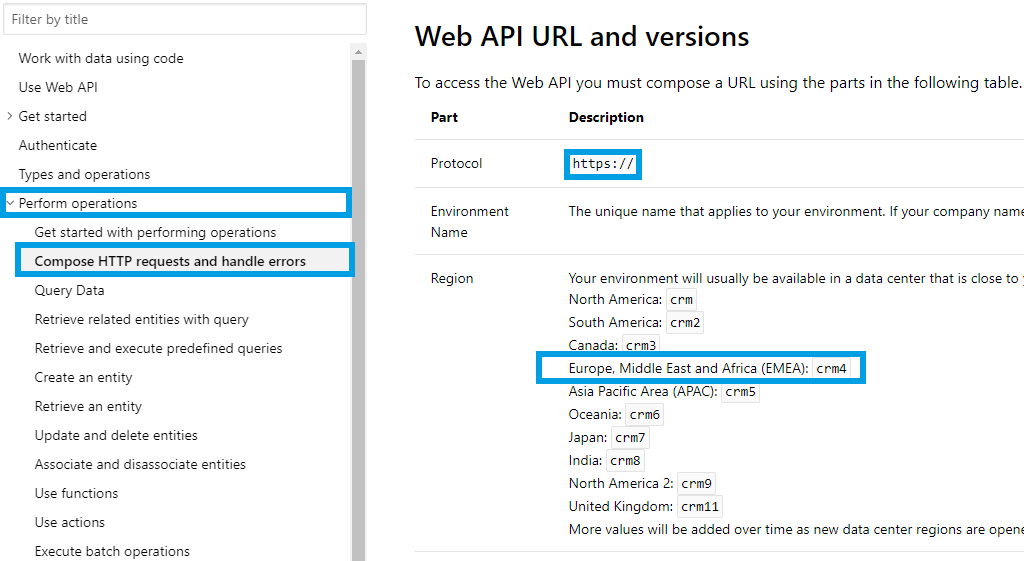
You also need the endpoint from the API you want to connect to. We are using the account endpoint. For more information about the endpoints, use the API reference.
An example URL of what it should look like: https://yourcompany.crm4.dynamics.com/api/data/v9.0/endpoint
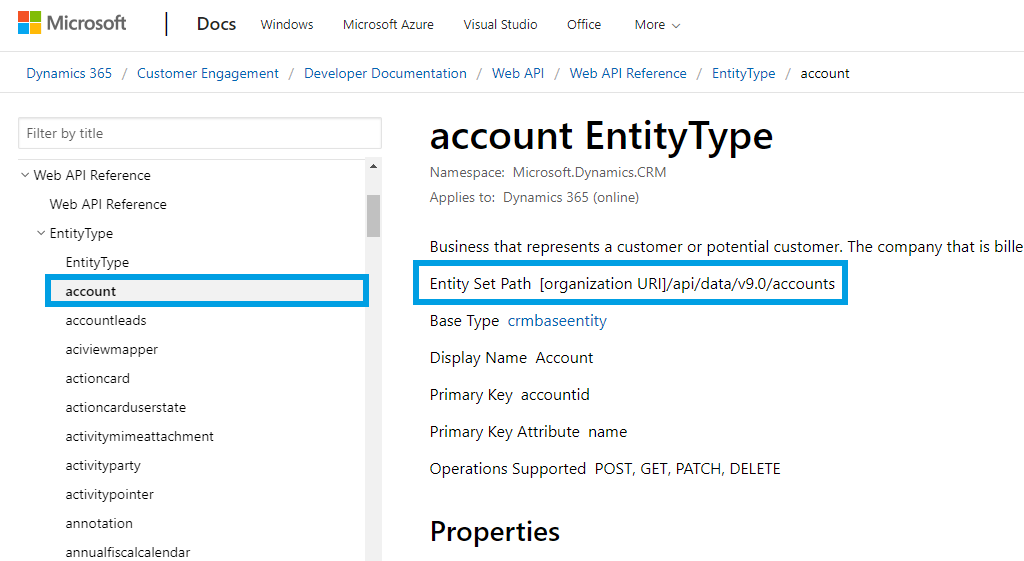
2. Configuring the Layer2 Cloud Connector
2.1. Creating a new connection
Create a new connection by using the Create New Connection option in the Actions pane (right-hand side). The new connection will appear at the bottom of the Connection Manager List (left-hand side). Click on your newly created connection to open the connection configuration settings.
Choose a meaningful name for your connection and replace the current "New Connection" Connection Title with it.
Connections to Microsoft Dynamics CRM can be bi-directional. An initial connection should always be uni-directional to assure that both data entities are identical before switching to bi-directional. Therefore, choose Left to Right as Direction. You can change this setting after your initial synchronization finished successfully.
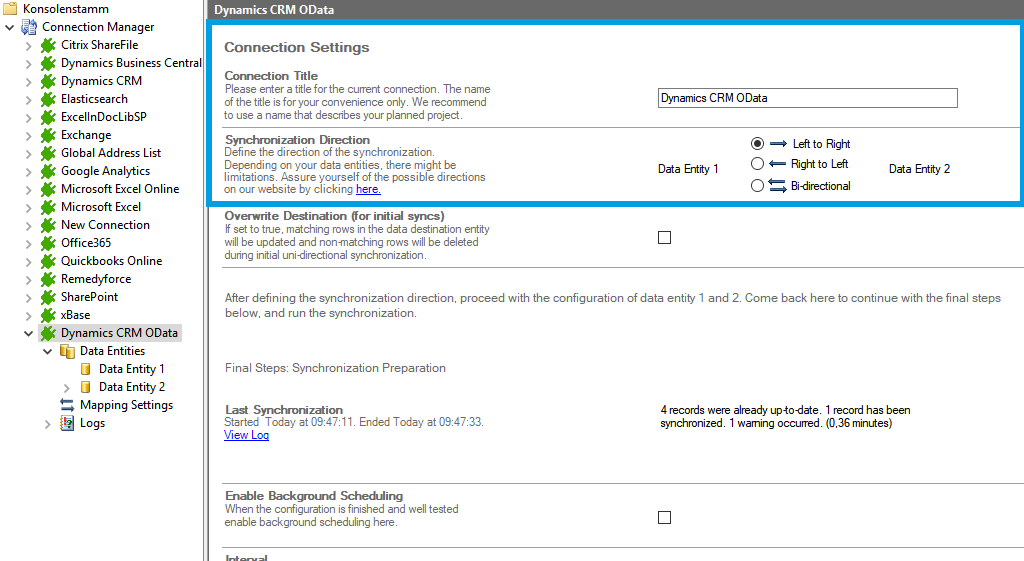
2.2. Configuring the Data Entity 1
We will now set up our Data Entities. Go to the data entity “Data Entity 1” to open the configuration settings.
Choose a Data Entity Title. It is recommended to give your entities meaningful names to maintain an overview when you decide to set up multiple connections.
Select the Data Provider for OData from the data provider list. You can search for OData by typing into the selection box.
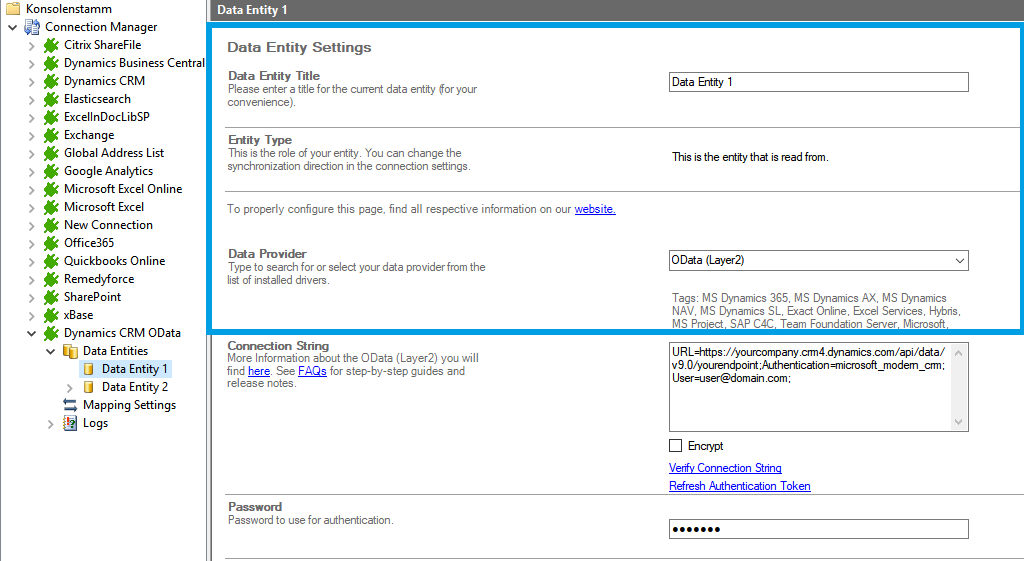
For the Connection String, we need the information mentioned in step 1. You can copy the below connection string and adjust it to match your gathered information. Use the Verify Connection String option to evaluate if the provided connection string is valid.
URL=https://yourcompany.crm4.dynamics.com/api/data/v9.0/yourendpoint;Authentication=microsoft_modern_crm;[email protected];
- "URL=https://yourcompany.region.dynamics.com/api/data/v9.0/endpoint;" this property must point to a valid Microsoft Dynamics CRM URL.
- "Authentication=microsoft_modern_crm;" this property defines the authentication method.
- "[email protected];" this property must be set to a user e-mail with rights to access the application.
Enter the user account's password into the Password field. The field masks the value for better security.
The Select Statement text box is used to define specific data queries. We will be gathering all top 5 results from our accounts endpoint. You can copy the below select statement and adjust it to match your needs. Save your changes by using the right-hand pane option Save Changes.
$select=*&$top=5
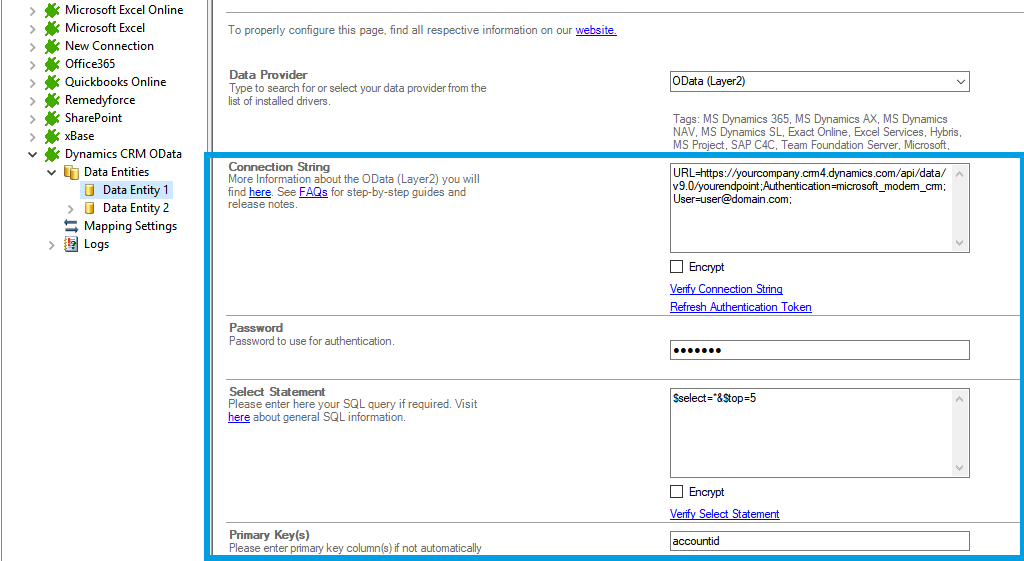
To check if all necessary columns are received, you can use the Preview Data option on the right-hand pane which will provide you with a pop-up window showing your sample data from your Microsoft Dynamics CRM entity.
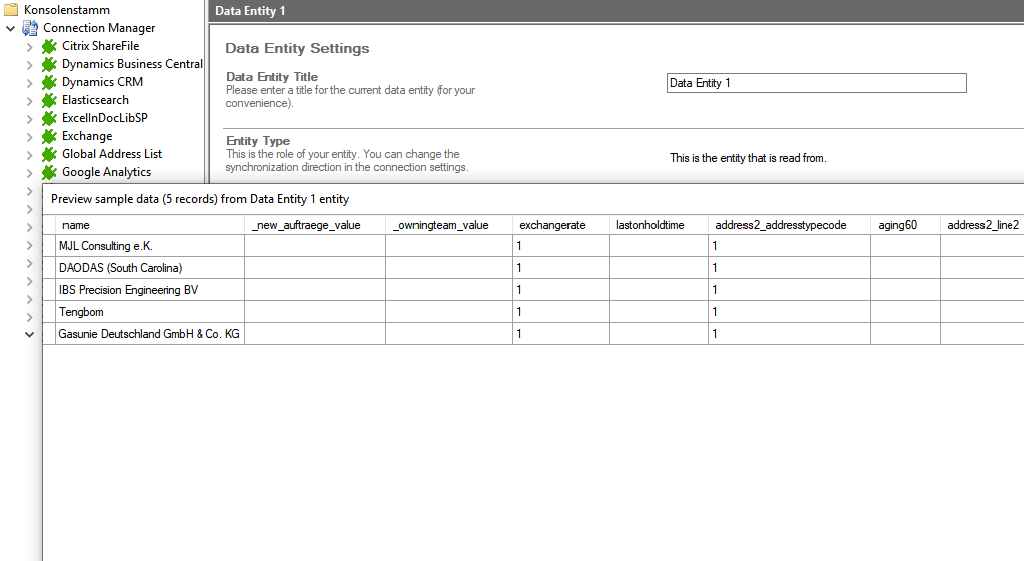
2.3. Configuring the Data Entity 2
In this section, we will guide you through configuring Data Entity 2 for seamless integration with Microsoft SQL Server. It is crucial to establish this configuration before proceeding to the next steps. Ensure that your table contains matching columns aligned with your source entity.
Follow these steps: Utilize the left-hand pane to switch to the data entity named "Data Entity 2." We will be using Microsoft SQL Server for this setup.
From the data provider list, select "Data Provider for SQL Server." You can search for SQL Server by entering it into the selection box.
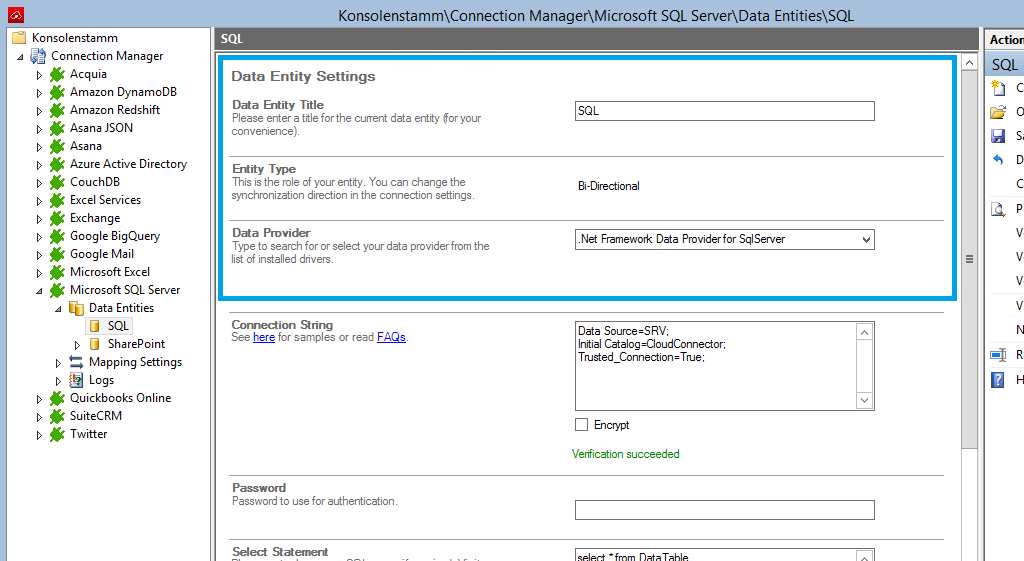
You can copy the connection string below and customize it to align with your SQL server details. Utilize the "Verify Connection String" option to validate its accuracy.
Data Source=mySQLServerName;Initial Catalog=mySQLDatabase;Trusted_Connection=True;
- "Trusted_Connection=True;" A trusted connection is the same as using Windows Authentication in SQL Server. Authentication is done by the domain, and authorization is handled by SQL Server.
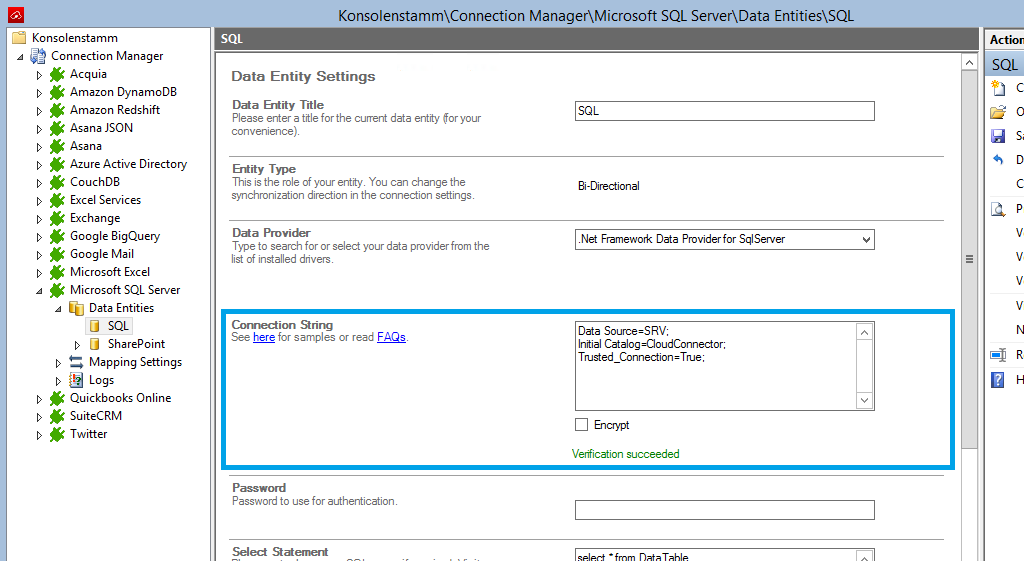
In the next step, we will configure our mapping settings. Click on the Mappings option on the left-hand pane. If columns have identical names, the Enable Auto Mapping option will match these columns automatically. Disabling this option allows you to match your columns as needed. Save your changes by using the right-hand pane option Save Changes.
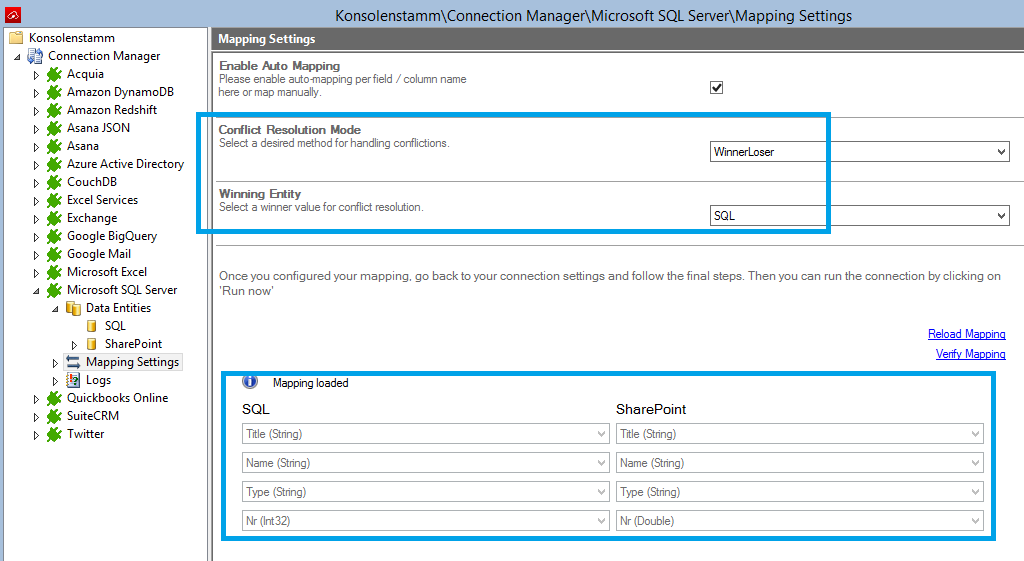
2.4. Running your connection
To initiate your connection, return to the main connection configuration node and click the "Run Now" button located at the bottom of the setup page. The "Run Synchronization Toolbox" will also display the synchronization process.
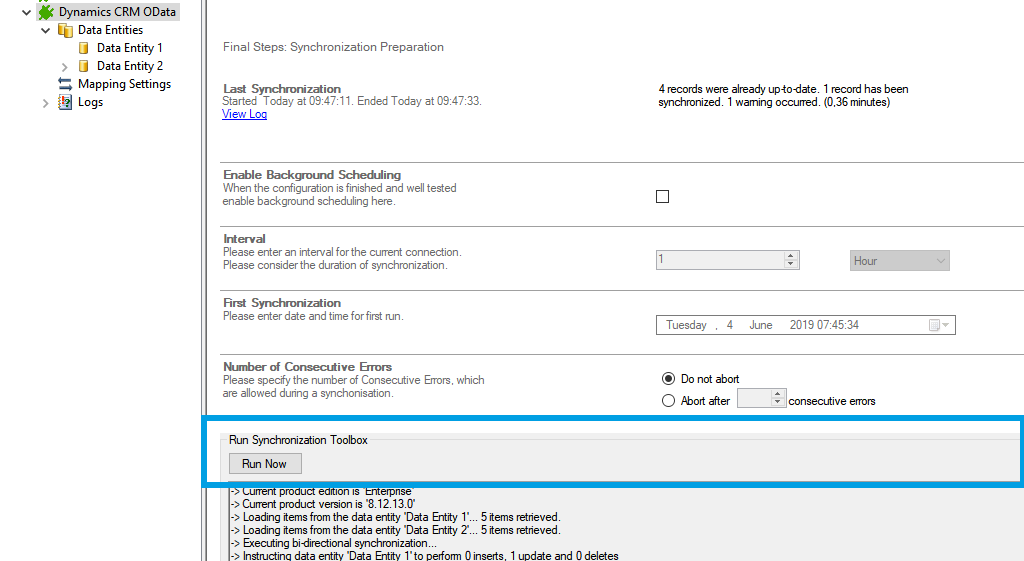
Below, you can preview the data available from our source entity:
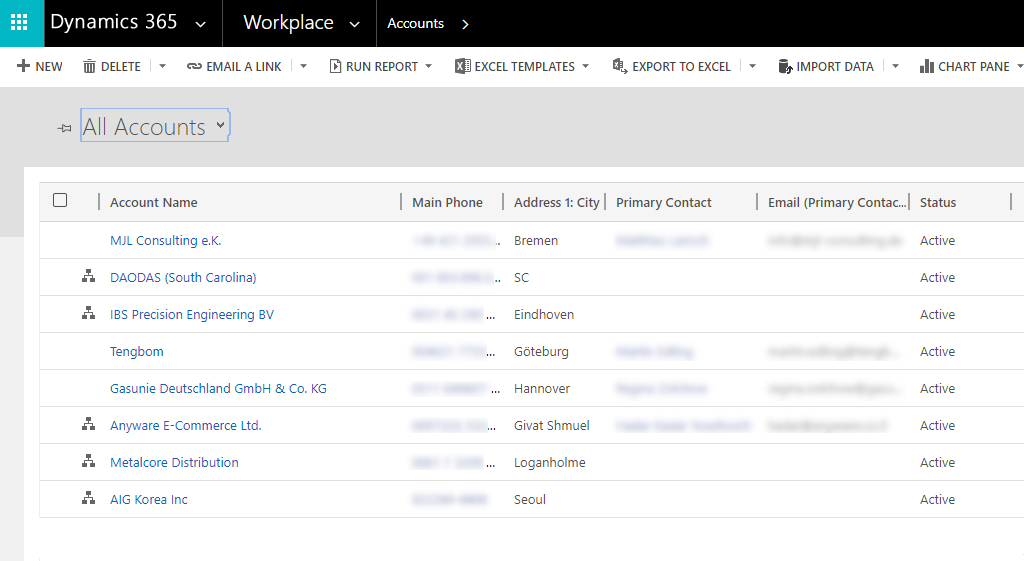
Upon successful initial synchronization, this will be the result in our SQL database:

If you want to use a bi-directional synchronization, you can now switch your connection direction after our first initial synchronization run is finished successfully. See section 3.1 for further information.
3. Hints and known issues
3.1. Connection direction
This connection supports both uni-directional and bi-directional synchronizations. However, when switching to bi-directional, carefully review your mapping settings as some systems may include read-only columns that cannot be directly mapped. Your query must be updatable for this (note that most joins are not).
We also recommend selecting a Conflict Resolution strategy that aligns with your environment's requirements. Further information on different conflict resolution methods can be found in our Layer2 Cloud Connector User Documentation.
3.2. Filters and queries
For comprehensive information on how to query your data, refer to the OData system query options or review sample select statements provided here.

